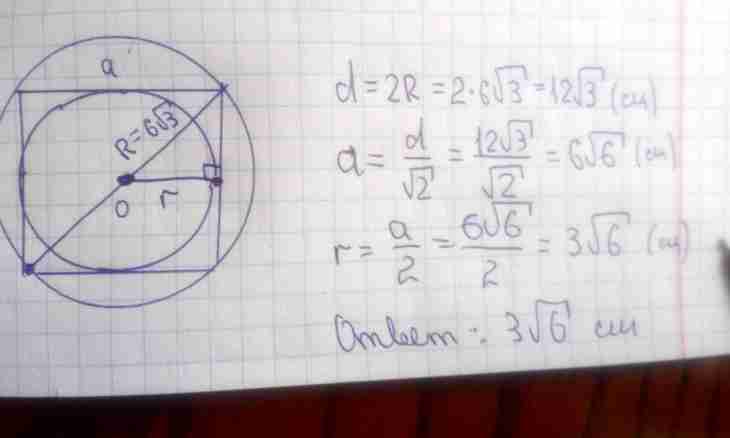Such circle which would concern one and all parties of this polygon is considered the circle entered in a polygon. One of types of a polygon is the square. How to find the radius of the circle entered in a square?
It is required to you
- Calculator
Instruction
1. Before passing directly to a calculation formula, it is necessary to focus attention that the inscribed circle halves the parties of a square. In other words, the party of a square is equal a, and a half of its length of a/2. This property of the circle entered in a polygon is characteristic not of all its types.
2. According to the drawing it becomes clear that diameter of a circle is exactly equal to length of the party of an initial square. Diameter is a piece which connects two any points of a circle, passing at the same time through its center. Radius is equal to a half of diameter, and it means that radius is equal also to a half of length of the party of a square. A formula it can be expressed so: r = a/2
3. It is possible to review the simplest example: the perimeter of a square makes 28 cm, it is required to find the radius of the circle entered in this square. At first it is worth knowing that the perimeter of a square is equal to the sum of all its parties. The parties are equal among themselves, and their of everything 4. Length of the party of a square means it is calculated so: 28 cm / 4=7 see. Now it is necessary to use the formula removed above: r=7/2=3.5 see the Answer: radius of the circle entered in a square is 3.5 cm.
4. Generally the radius of the circle entered in a polygon can be found, knowing perimeter of this polygon and its area. The formula looks so: r=S/p where p is a half of perimeter.
5. To enter a circle in a quadrangle, it has to have some properties. First, it has to be convex. It is the simplest to check for camber by means of the imagined lines prolonging the parties of a quadrangle. If they have no crossings, then a quadrangle convex. Secondly, the sums of its opposite sides have to be equal.

